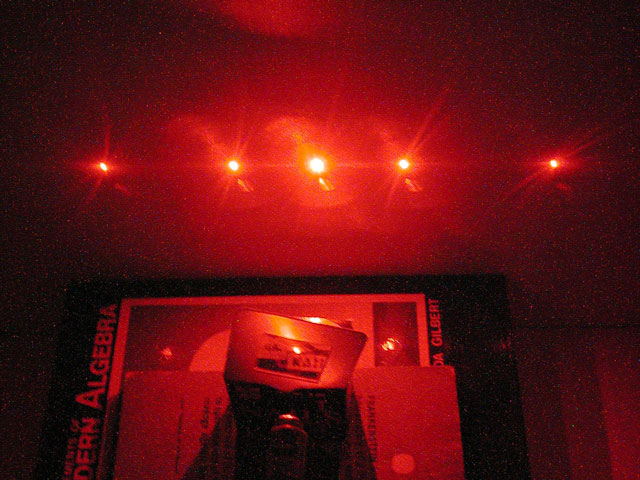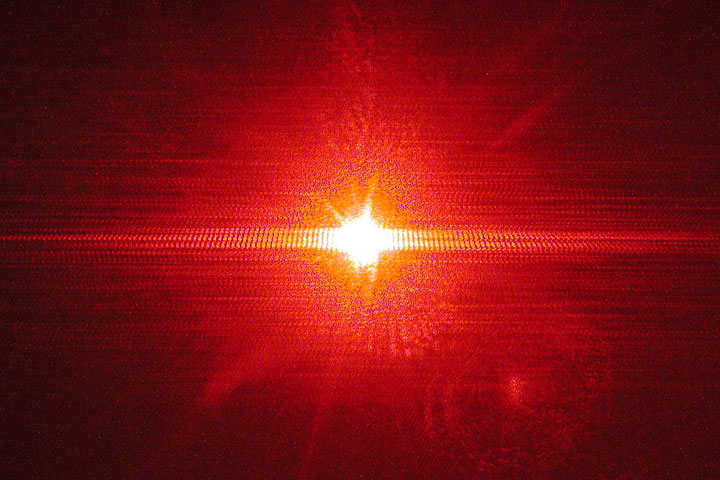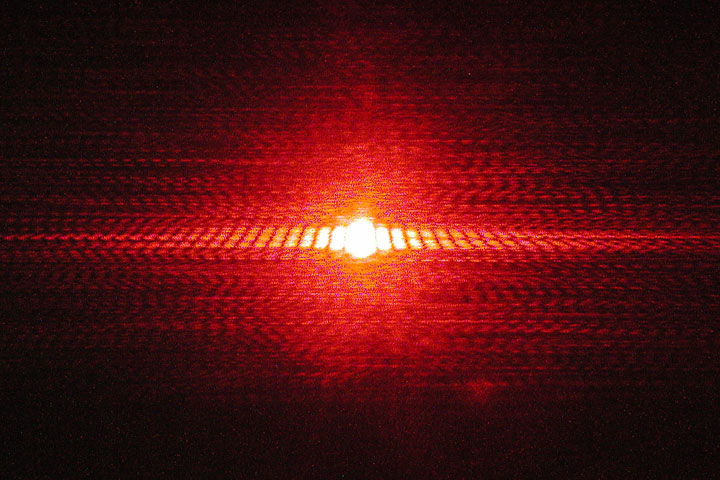Diffraction and Interference (Light)
Summary
- Diffraction…
- is the bending or spreading of a wave around an obstacle or through an opening.
- is most apparent when the size of the obstacle or opening (a) and the wavelength of the wave (λ) are of the same order (a ~ λ).
- A shadow is a region behind an obstacle into which a wave does not easily diffract.
- Umbra: a region of total shadow; the source of the wave is completely obscured.
- Penumbra: a region of partial shadow; the source of the wave is partially obscured.
- Sound vs. Light
- Sound waves are millions of times longer than light waves.
- Diffraction is more easily observed for sound than light in everyday experience.
- You can hear around corners, but you can't see around them.
- Light sources cast noticeable shadows.
- Interference
- When waves occupy the same place at the same time they interfere or superpose.
- The resulting disturbance is the sum of the individual disturbances at every point in space and time.
- This is known as the principle of linear superposition.
- Diffraction and interference occur together in many situations.
- Double slit interference or double source interference
- This was the original experiment that showed that light is a wave.
- It was first performed by the English scientist Thomas Young at the end of the 18th century and is often called Young's double slit experiment.
- Description
- Monochromatic light is incident on an opaque barrier with two parallel, narrow openings (often called slits).
- Light diffracts through each opening.
- The overlapping light waves combine to produce interference fringes (parallel bright and dark bands) when projected onto a flat surface (often called a screen).
- Interference can be produced for other shaped openings, so in general an interference pattern is produced.
Double source interference. The sources are closer together in the image on the right. Do not click on the animations if you have photosensitive epilepsy or a similar condition. - This was the original experiment that showed that light is a wave.
- Single slit interference or single source interference or self interference
- Description
- Monochromatic light is incident upon a single opening or obstacle.
- Light diffracts through the opening or around the obstacle.
- An interference pattern arises from the interference of light waves from extreme ends of the opening or opposite sides of the obstacle.
- Description
- Multiple slit interference or multiple source interference
- Description
- Monochromatic light is incident upon a series of equally small, equally spaced, equally shaped openings or obstacles.
- Light diffracts through the openings or around the obstacles.
- An interference pattern arises where the bright regions are distinct and widely separated.
- Everyday examples
- grooves in phonograph records
- CDs, DVDs
- scratches in a car windshield caused by rough wiper blades
- A diffraction grating is…
- an optical device consisting of a series of tightly spaced, narrow grooves etched onto a plastic, glass, or metal surface.
- a device for illustrating multiple source interference in the classroom
- a device for producing a spectrum
 Widely spaced interference fringes of red laser light through a diffraction grating
Widely spaced interference fringes of red laser light through a diffraction grating - Description
- Double slit interference or double source interference
- Spectra come in two basic types depending on the nature of the source of light.
- Continuous spectra…
- contain every frequency or wavelength of light without interruption
- Mathematically, there is a nonzero value of the intensity for every value of frequency or wavelength.
- Imagine a smooth curve on a graph where frequency or wavelength is on the x-axis and intensity is on the y-axis.
- are produced by "hot" objects
- This is an informal way of saying that the characteristics of the spectrum are affected by the temperature of the source.
- contain every frequency or wavelength of light without interruption
- Discrete spectra…
- are made up of a collection of separate and individual frequencies or wavelengths
- Mathematically, there is a finite set of wavelengths or frequencies, each with its own intensity.
- Imagine a data table with frequency or wavelength in the first column and intensity in the second column that has a limited number of unique entries.
- are produced when bound electrons experience a drop in energy level
- Since different elements have different energy level structures, discrete spectra are often described as the "fingerprints" of the elements.
- are often photographed using narrow sources or narrow openings
- This is why discrete spectra are often said to be made up of spectral lines.
- are made up of a collection of separate and individual frequencies or wavelengths
- Continuous spectra…
 The continuous spectrum of daylight
The continuous spectrum of daylight
 The discrete spectrum of excited mercury vapor
The discrete spectrum of excited mercury vapor



